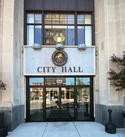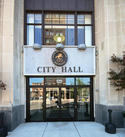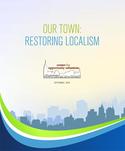Much of the U.S. media tends to see smaller cities as backwaters, inevitably left behind as the “best and brightest” head to the country’s mega-regions. The new economy, insists the Washington Post, favors large cities for start-ups and new businesses. Richard Florida has posited the emergence of a “winner take all urbanism” that tends to favor the richest cities, such as New York and San Francisco. read more »
Small Cities
The Best Small and Medium-Size Cities For Jobs 2017
- Login to post comments
America the Cheap
America is a price dominant culture, and we need to take responsibility for that when we complain about bad customer service, poor infrastructure, etc. Certainly American business and political leadership could be better, but they aren’t the ones who decided to shop at Wal-Mart instead of the local store (favoring short term financial gain over long term community loss). Nor are they the ones who force us to vote for politicians promising something for nothing. read more »
- Login to post comments
Re-inhabitation of Small Town America
My friend Kirsten Dirksen at faircompanies.com recently posted a new video about Water Valley, Mississippi. It demonstrates that there are plenty of great compact mixed use walkable neighborhoods out there that can be re-inhabited. Building anything of this kind from scratch is theoretically possible, but it almost never happens due to endless zoning regulations, building codes, and cultural inertia. Water Valley is lucky in the sense that it’s just down the road from a prestigious university. read more »
- Login to post comments
Caterpillar’s HQ Move to Chicago Shows America’s Double Divide
Earlier today Caterpillar announced that it was moving its corporate headquarters from Peoria to Chicago. The move affects about 300 top-level executives. The company will retain a large presence in Peoria. read more »
- Login to post comments
Babes In Trumpland: The Coming Rise Of The Heartland Cities
Contrary to the media notion that Donald Trump's surprising electoral victory represented merely the actions of unwashed “deplorables," his winning margin was the outcome of rational thinking in those parts of the country whose economies revolve around the production of tangible goods.
And their economies stand to gather more steam in the years ahead. read more »
- Login to post comments
How the Left and Right Can Learn to Love Localism: The Constitutional Cure for polarization
The ever worsening polarization of American politics—demonstrated and accentuated by the Trump victory—is now an undeniable fact of our daily life. Yet rather than allowing the guilty national parties to continue indulging political brinkmanship, we should embrace a strong, constitutional solution to accommodating our growing divide: a return to local control. read more »
It Wasn't Rural 'Hicks' Who Elected Trump: The Suburbs Were -- And Will Remain -- The Real Battleground
Much of the New York and Washington press corps has concluded that Donald Trump’s surprising journey to the Oval Office was powered by country bumpkins expressing their inner racist misogyny. However, the real foundations for his victory lie not in the countryside and small towns, but in key suburban counties. read more »
A Better Way
My recent post at Granola Shotgun described how a town in Georgia spent an enormous amount of public money on a new civic center and road expansions, but somehow managed to devalue nearby private property in the process. Here’s an example of a neighborhood in Nashville, Tennessee that took a different approach that cost a lot less and achieved a radically better set of outcomes. read more »
- Login to post comments
Local Govt. Control: The Ignored Campaign Issue
In an election cycle full of spittle and bile, arguably the greatest issue --- the nature of governance and the role of citizens --- has been all but ignored. Neither candidate for president has much feel for the old American notion of dispersed power. Instead each has his or her own plans for ever greater centralization: Trump by the force of his enormous narcissistic self-regard; Hillary Clintonthrough the expansion of the powers increasingly invested in the federal regulatory apparatus. read more »
- Login to post comments
Our Town: Restoring Localism
This is an introduction to a new report from the Center for Opportunity Urbanism, "Our Town: Restoring Localism." Download the full report here.
America is facing a critical moment in its evolution, one that threatens both its future prosperity and the integrity of its institutions. Over the past several decades, government has become increasingly centralized, with power shifting from local communities to the federal level. This has been accompanied by a decline in non-governmental institutions, a matter of concern to thinkers on both the right and the left. read more »
- Login to post comments






















